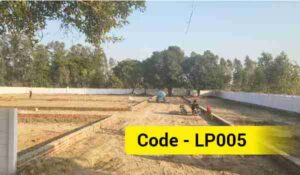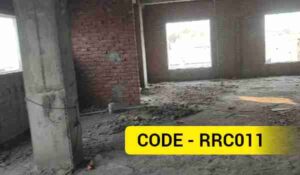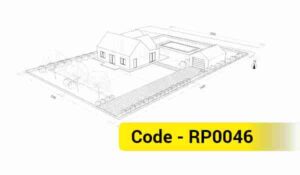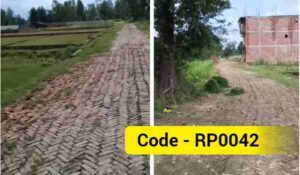Making Industries Easier in Uttar Pradesh: Cheaper Land, Simpler Rules, and New Trust for Investors
UP is growing fast, and its industrial progress is a big part of this. The UP government is working hard to make it easier to set up factories by lowering land prices and simplifying rules. This blog explains these changes in simple words so you can understand what’s happening and why it matters. It includes Industries updates from 2025, like new committees, land price changes, and support for small businesses.

What Are Industrial Land and Rules?
Industrial land is the land used for building factories, like those making clothes, phones, or biscuits. The price of this land (called circle rates or premium rates) and the rules (like how to get land or build a factory) decide whether businesses want to come to UP. If land is too expensive or the rules are too hard, companies might go to other states. UP wants to make land affordable and rules easy so more factories can open.
What Has UP Done? (2025)
1. Three Special Committees
In August 2025, the UP government created three groups of experts to help industries grow:
-
First Committee (More Land): UP has about 4 lakh hectares of land marked for industries, but only 1.5 lakh hectares are ready to use. This group will plan how to make the rest of the land ready for factories, looking at what other states like Gujarat do.
-
Second Committee (Fair Land Prices): This group is checking land prices. For example, land in Bundelkhand is 20-30% more expensive than in Gwalior, Madhya Pradesh, so companies go there instead. This committee will suggest ways to make prices fairer.
-
Third Committee (Easier Building Rules): This group is making building rules simpler. Right now, different areas like Noida and Greater Noida have different rules, which confuses people. This committee will create one set of rules and an online system for approvals.
These groups have 15 days to share their ideas, so changes can start by the end of 2025.
2. Changes in Land Prices
In September 2024, the Uttar Pradesh State Industrial Development Authority (UPSIDA) updated land prices:
-
Circle Rate: This is the basic price of land set by the government, used for taxes and fees. In 2024, these rates increased by 4.31% due to rising costs.
-
Premium Rate: This is what UPSIDA charges for industrial land, including extras like roads and electricity. These rates also went up by 4.31%, but in smaller towns like Jhansi and Chitrakoot, prices were kept lower.
-
Different Areas:
-
Big Cities (Lucknow, Noida, Ghaziabad): Land costs ₹10,000-₹15,000 per square meter because many companies want to be here.
-
Smaller Towns (Jhansi, Aligarh, Chitrakoot): Land costs ₹2,000-₹5,000 per square meter to attract more businesses.
-
-
Special Discounts:
-
10-15% off for small businesses (MSMEs).
-
5-10% less for eco-friendly projects like solar power or electric vehicles.
-
Extra benefits for projects in the Defence Corridor.
-
Read More…
- Uttar Pradesh Building Construction and Development By-Laws 2025
- Laws Governing the Sale of Land by Scheduled Caste Landowners to General Category in Uttar Pradesh
- Understanding Section 80 (Section 143) of the Uttar Pradesh Revenue Code, 2006
- Succession Laws in Uttar Pradesh
- 12 Years of Possession (Adverse Possession) and the Property is Yours? The Complete Story of the Limitation Act and Supreme Court Rulings!
- Succession Laws in Uttar Pradesh
3. New Policy for Small Businesses (MSME Policy 2025)
In August 2025, UP started a policy to help small and medium businesses:
-
Online Auctions: Land and factory spaces are now sold online, and you only need to pay 10% upfront. This helps small business owners join in.
-
Better Facilities: Industrial areas will get improved roads, electricity, and water. For example, 100 out of 150 industrial areas in UP now have electricity all day.
-
Money Help: Small businesses can get subsidies and low-cost loans to start their work.
4. Same Building Rules Everywhere
In September 2024, UP said all industrial areas (like UPSIDA, Noida, Greater Noida) will follow the same building rules:
-
The Problem: Different places have different rules. For example, Noida allows less building space (FAR 2.5) than Greater Noida (FAR 3.5), which is confusing.
-
The Fix: One set of rules and an online approval system (like Nivesh Mitra) will make things faster. Approvals that took 45 days will now take 15 days.
-
The Benefit: This will make it easier for businesses and reduce delays.
How This Helps UP
These changes will make a big difference:
-
More Jobs: UP created 1.2 crore jobs by 2024 and wants 50 lakh more in 2025. New factories will help with this.
-
Better Small Towns: Places like Bundelkhand and Purvanchal will get more factories, helping them grow.
-
More Companies: In 2023, UP got ₹40 lakh crore in business proposals. These changes will help turn half of them into real projects by 2026.
-
Support for Small Businesses: UP has 90 lakh small businesses, giving jobs to 1.8 crore people. The new rules could increase this to 1 crore businesses by 2027.
-
Cleaner Environment: Support for green projects, like solar power, will cut pollution. Solar projects grew 30% in 2024.
Problems and How UP Will Fix Them
There are still some challenges:
-
Getting Land: Some people don’t want to sell their land, and there are fights over payments. Fix: Clear payment rules and talking to local people.
-
Slow Approvals: Some offices take too long to approve projects. Fix: Use online systems like Nivesh Mitra more.
-
Uneven Growth: Big cities get more factories than small towns. Fix: Give extra benefits to smaller towns.
UP’s Big Plans
Chief Minister Yogi Adityanath wants UP to have a $1 trillion economy. Here’s how they’re working on it:
-
Defence Corridor: Areas in Agra, Aligarh, Lucknow, Kanpur, Jhansi, and Chitrakoot are being set up for making defence equipment.
-
Expressways: Ganga, Yamuna, and Bundelkhand Expressways connect industrial areas better.
-
Tech Centers: Big companies like Samsung, Vivo, and Microsoft are setting up in Noida and Greater Noida.
-
Transport Hubs: New logistics parks, like in Jewar, make it easier to move goods.
Example: Noida’s Story
Noida is UP’s biggest industrial area. In 2024, Samsung opened a ₹5,000 crore factory there, creating 20,000 jobs. But high land prices (₹15,000 per square meter) made it hard for small businesses. With the new rules:
-
Small businesses pay ₹10,000 per square meter.
-
Approvals now take 30 days instead of longer.
-
Green projects get a 5% discount.
A Simple Example for You
Imagine your friend wants to start a small factory to make toys. Before, the land was too expensive, and there were too many complicated rules. They had to visit many offices. Now, with cheaper land, easier rules, and online applications, your friend can start the factory faster. This means more jobs for people in your town and more shops and schools nearby.
Conclusion
UP’s efforts to make land cheaper and rules simpler are helping the state grow. More factories mean more jobs, better towns, and a stronger economy. This shows how government decisions can change lives. By 2026, we’ll see even more progress as these plans come to life.
Want to Know More? Check out the Nivesh Mitra website or UPSIDA’s reports. Share your questions or ideas.





















